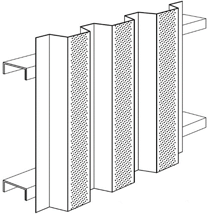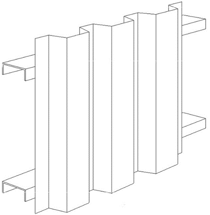
Oil and gas safety design always looks for solutions to protect people and equipment from different kinds of risk. Next to risks of fire, oil and gas structures need to be equipped against risk of radiation.
People who are exposed to radiation may suffer from serious harm to their health in the long run. Therefore, the health and safety department of each project has a duty of care to avoid such problems.
Radiation is generally emitted from flare tips on the platform. During the design process, the height of the flare tip will be based on the radiant-heat intensity generated by the flame. This must be done very carefully since achieving a safe design should not necessarily result into uneconomical investment by overdesign and at the same time should allow a maximization of production.
So, how can safe design be achieved efficiently and effectively? I will outline the solutions in this regard below.
Efficient and effective safety design against radiation levels

Proper protection needs to be offered to maintain safety on locations where radiation from the flare tip might be harmful for people. This is particularly important because health implications for workers who are exposed to such radiation emitted from flares can be severe and can last for a very long time.
The right protection can be accomplished by manufacturing architectural products that are developed with the proper material. Generally, radiation resistant walls will be installed special aluminum and stainless steel (EMC proof) materials in order to comply to the required level of radiation restriction indicated. There are two types of radiation resistant walls, perforated walls and non-perforated walls.
Types of radiation resistant walls
Perforated walls are ideal solutions for areas where radiation resistance is required and at the same time visibility and air circulation are important. The small perforations within the wall allows workers to work effectively without any breathing problems while being protected against radiation. The open area in the skin can be manufactured according to the requirements of the project and is approximately 0% to 40%. Radiation reduction also depends on the requirements
of the project and can be between 30% to 94%. Non-perforated walls can be installed in areas where there is no need for air circulation or visibility. Naturally, there is no open area in the skin of the wall. The radiation reduction level of a non-perforated wall can also be between 30% to 94%.
Non-perforated walls can be installed in areas where there is no need for air circulation or visibility. Naturally, there is no open area in the skin of the wall. The radiation reduction level of a non-perforated wall can also be between 30% to 94%.
Radiation resistant walls allows your oil and gas structure to be safe enough to allow people to work effectively without any concern for health issues. It is recommended to carefully assess all aspects of the project on whether radiation resistant walls are necessary. If yes, it is important to decide whether you need perforated or non-perforated radiation resistant walls to maintain working efficiency.






